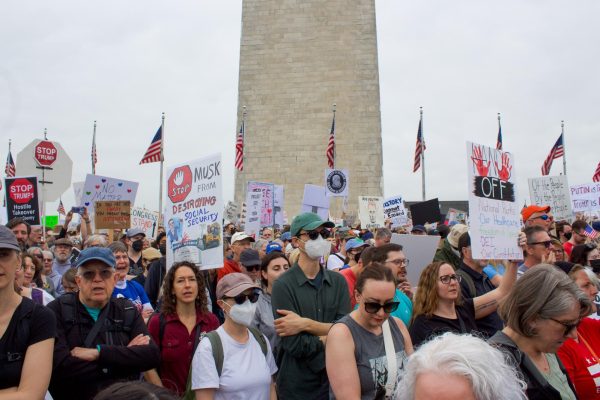Race in the Kitchen: The Devaluation of Ethnic Food
D.C. is becoming the city for foodies. With over 2,000 restaurants, according to the National Restaurant Association, it comes as no surprise that Bon Appétit named the city the 2016 ‘Restaurant City of the Year.’ D.C. surpassed last year’s winner, San Francisco, and ahead of the infamously restaurant crazed New York City.
But for a city with so many dining options, D.C. does not feature many prominent ethnically diverse cuisines and restaurants. The Washingtonian lists the best 100 restaurants in the D.C. Those featured in the list charge considerably less money than American and Western European restaurants. In that list, 76 of the 100 restaurants are either European (specifically French and Italian) or American. Twenty-three identify are Latin cuisine, and 7 are Asian cuisine. There are no African restaurants.
Now view the list from most to least expensive. The restaurants listed as being $$$ to $$$, or the more expensive restaurants, are overwhelmingly French and American. Only 8 out of those 51 in that category being Asian, none of which are Latin or African.
Comparing this to Time Out’s 100 Best Restaurants in NYC, about 20 percent of the listed restaurants were Asian. Additionally, there were only three Mexican restaurants, one soul food and one Afro-inspired restaurant listed; although they still were cheaper than their Western cuisine counterparts.
These statistics don’t match the demographics of the city. According to a report taken July 1, 2015 by the United States Census Bureau, D.C.’s population is 48.3 percent black, 44.1 percent white, 10.6 Latinx and 4.2 percent Asian. Immigrants, specified by the census as foreign born persons, are 14.1 percent of the overall population. Why doesn’t our food match our city?
Alexis Samayoa, executive chef and creator of D.C.’s first Mezcaleria, Espita, says he has faced issues with restaurant-goers and their expectations of what his prices should be.
“I’m buying the same product that any expensive steak house is buying [and] I’m pricing it accordingly, and unfortunately [Mexican food] has that stigma of if you read the word taco, it’s cheap,” Samayoa said. “[But] it’s not cheap because I’m buying the best quality … and then that becomes an eyesore to everyone.”
Take for example Italian shrimp scampi and Chinese shrimp lo mein. Both dishes contain somewhat equivalent ingredients—noodles and shrimp—and require the same amount of time to make. Yet one is vastly different to customers in terms of value.
According to 2015 Zagat data for NYC, traditional Western cuisine (American, French, Continental, Italian, Spanish) averaged $60 a meal. Asian restaurants (Japanese, Korean, Vietnamese, Indian, Chinese, Thai) on the other hand, averaged $44 a meal.
Why is so called ‘ethnic’ food cheaper than its ‘Western’ counterparts?
“[Americans] don’t necessarily think that much about [food] having a meaning and yet all of the choices behind the foods we choose to eat has some meaning behind it, has some social context,” said Stephanie Hartman, a literature professor at American University who lectures about food.
One important factor to this is cultural prestige. Our food culture is a mixture of multiple countries: Italian, German and Irish immigrants have given America pizza, hot dogs, burgers, pretzels. These dishes are now considered American, yet we don’t give the same title to a burrito or chop suey.
“It’s funny to think, when does something finally cross over and become ‘American’? Is it when you can get it at the Cheesecake Factory?” Hartman said.
Maketto, a Zagat rated Cambodian and Taiwanese restaurant in D.C., has faced critiques of authenticity. Erik Bruner-Yang, the executive chef, says that drawing the link between what is American and Asian is not as easy as we think.
In August, Maketto received an anonymous review on Yelp. It reads, “This joint preys upon the ignorance of its mostly white hipster clientele and non-Asian staff who don’t actually know any better.”
Bruner-Yang responded on Facebook to this review writing: “Unfortunately many Asian Americans enter a new style Asian establishment with any already preconceived that the food will be a bastardization of their culinary roots than being open minded to new food experiences. … We should be celebrating Asian restaurants owned by Asian Americans trying to break the cycle of $5 lunches, dragon rolls, and businesses with no real understanding of our local food system and the impact your food philosophy has globally.”
Authenticity of a restaurant and its cuisine is political. Pricing, audience, and ethnic composition of the restaurant staff play into food politics in D.C.
“How we form our identity in relation to place and people, it all comes out rather organically in the food choices people make,” Hartman said.
Food, in an increasingly foodie city, is becoming reflective of these changing norms about what food is, who food is for, and how food should be priced. As D.C. continues to gentrify, demands about what food is legitimate and authentic has the potential to change.
Samayoa says that if we have these open conversations about what and why certain foods are desired, we can talk about food in a way that hasn’t been done before.
“D.C.’s becoming something, and it’s heading the right way,” Samayoa said.











